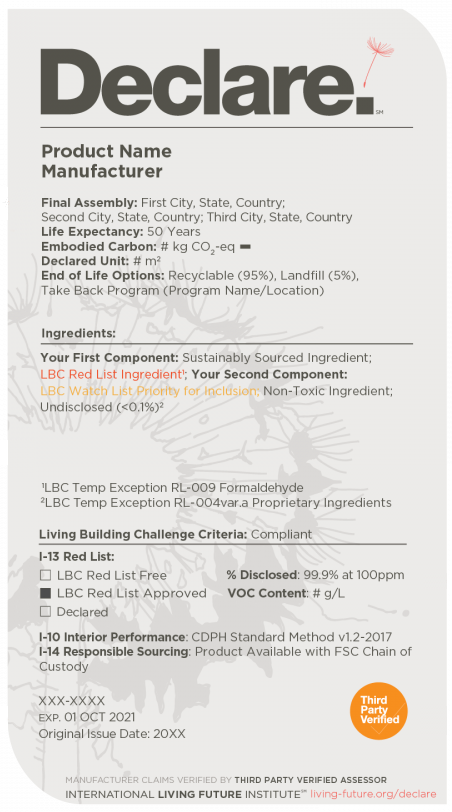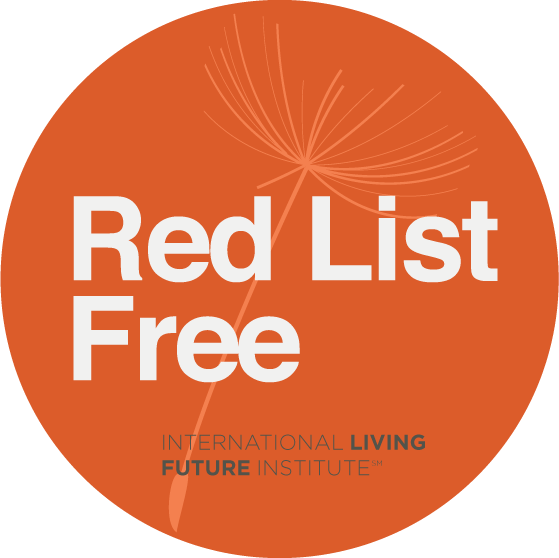Declare is part of the International Living Future Institute’s (ILFI) suite of programs that catalyse a socially just, culturally rich and ecologically restorative future. This trusted public database and product labelling program answers 3 key questions:
- Where does the product come from?
- What it is made of?
- Where does it go at the end of its life?
Materials selections and product transparency have emerged as increasingly crucial factors in the regenerative building movement, circular economy and human and environmental health, through design, specification, product manufacturing and supply chain transparency.



